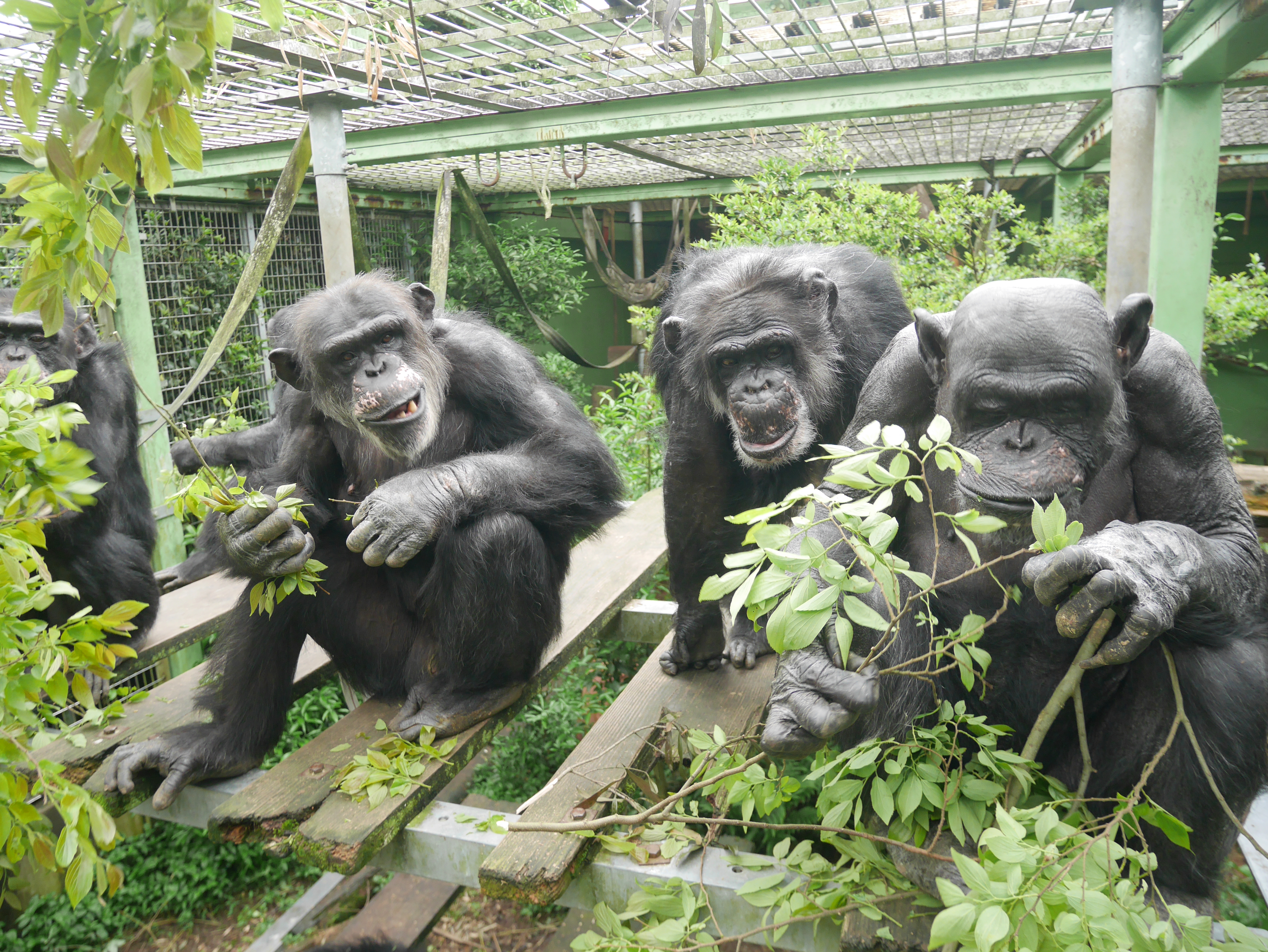Animals
Everything You Want to Know About Dinosaur Sexual Anatomy and Reproduction, From Their Genitalia to How They Laid Eggs
Paleontologists continue to find fossils that help revise our understanding of how dinosaurs did it
How Do Polar Bears Keep Ice Off Their Fur? New Study Reveals the Secret—and It Could Improve Technology
The de-icing properties of polar bear sebum could fuel new innovations, scientists say, potentially unlocking alternatives to harmful “forever chemicals” used in ice-resistant coatings today
Shark Pup Mysteriously Hatches in Aquarium Tank With Only Females. How Could This Birth Happen?
Experts say the case is either a rare form of asexual reproduction or an instance of (very) delayed fertilization
See the First-Ever Photographs of the Elusive Mount Lyell Shrew, Finally Caught on Camera in California
A group of young researchers captured and photographed the animal on a three-day expedition to the Eastern Sierra Nevada
Fossil Hunter Discovers 66-Million-Year-Old Vomit in Denmark, Offering a Clue to the Cretaceous Food Chain
A marine animal snacked on some sea lilies that did not agree with its stomach—and we now know what happened next
A New Marine Protected Area in the Marshall Islands Is Brimming With Life, Like a 'Time Machine' to Oceans Long Ago
The waters around two remote atolls in the central Pacific Ocean—spanning 18,500 square miles—are now protected from fishing
Six Clever Snakes to Celebrate as We Slither Into the Lunar New Year
These fascinating serpents embody acclaimed qualities including cunning and intelligence
See 15 Winning Images From the Close-Up Photographer of the Year Competition
The annual contest offers a glimpse into the hidden world of tiny scenes, from insects to fish to fungi
This Heroic Dog Raced Across the Frozen Alaskan Wilderness to Deliver Life-Saving Medicine—but His Contributions Were Long Overlooked
Togo, not Balto, was the driving force behind the 1925 Serum Run to Nome, which found teams of mushers and sled dogs delivering antitoxin to children suffering from diphtheria
Man Finds Rare Trove of Winnie-the-Pooh Drawings and Manuscripts in His Father's Attic
The papers connected to author A.A. Milne—including original drafts, illustrations, letters, poems and corrected proofs—sold at auction for more than $118,000
How a Hawaiian High School Student Inspired Nine New State Animals
Researchers hope the designation of several species of land snails, or kāhuli, will lead to conservation
Oyster 'Blood' May Be the Secret Weapon in Our Fight Against Antibiotic-Resistant Superbugs, Study Finds
In lab experiments, a protein found in the Sydney rock oyster made some antibiotics more effective and killed several types of illness-causing bacteria
Researchers Identified a New 'Supergiant' Crustacean With 14 Legs—and They Named It After Darth Vader
In recent years, the deep-sea giant isopod has also become a seafood delicacy in Vietnam, where it was discovered
Elephants Aren't People and Can't Sue to Leave a Zoo, Colorado's Top Court Rules
The court rejected a case to send five African elephants to a sanctuary, saying they have no legal right to demand release under habeas corpus
A Sunfish Got 'Lonely' When Its Aquarium Closed for Renovations. Then, Staff Found a Creative Way to Cheer It Up
The solitary fish named Mambo stopped eating and seemed to be missing its human visitors—so aquarists attached photos of human faces and uniforms to the side of its enclosure
The National Zoo's Giant Pandas Are Finally Making Their Public Debut
Bao Li and Qing Bao, both 3 years old, are the latest black-and-white bears to call the nation's capital home
Why Do Mammals Have Outer Ears? Scientists Are Getting Closer to Solving the Mystery
Two new studies offer insights into the evolution and development of external ears, which appear in humans and other mammals but aren't found in reptiles, birds or amphibians
Fossilized Poop Reveals How Extinct, Flightless Birds Helped Spread New Zealand's Colorful Fungi
The upland moa was likely drawn to the fungi because of their resemblance to berries, scientists say, allowing the creature to fill a role typically played by mammals
How a Mass Extinction Driven by Ancient Volcanoes Led to the Age of the Dinosaurs
Roughly 201 million years ago, drastic changes extinguished many forms of life and led to conditions that allowed the terrible lizards to thrive
For Chimpanzees, Peeing May Be Contagious—Just Like Yawning Is for Humans, Study Finds
Scientists suggest captive chimpanzees engage in 'socially contagious urination'—that is, when one primate starts peeing, others quickly follow suit
Page 1 of 195
:focal(235x126:236x127)/https://tf-cmsv2-smithsonianmag-media.s3.amazonaws.com/filer_public/02/23/02237851-edf2-4e17-babb-fcfe455bd577/muja-tyrannosaurus_web.jpg)
:focal(234x156:235x157)/https://tf-cmsv2-smithsonianmag-media.s3.amazonaws.com/filer_public/98/d4/98d4f795-06b9-4c40-b55b-6c97154c97ea/polar_bear.jpg)
:focal(568x427:569x428)/https://tf-cmsv2-smithsonianmag-media.s3.amazonaws.com/filer_public/97/5a/975a112f-f64d-4d25-be07-39124ce3bf6e/img_0065.jpg)
:focal(1457x1526:1458x1527)/https://tf-cmsv2-smithsonianmag-media.s3.amazonaws.com/filer_public/e5/6d/e56d993f-2e9c-44e0-9694-f0ef8cc34b83/lyell_shrew_on_natural_background.jpg)
:focal(1024x887:1025x888)/https://tf-cmsv2-smithsonianmag-media.s3.amazonaws.com/filer_public/5a/f5/5af5dd7e-da23-4bd4-974a-17b36985085a/fossilized_vomit.jpg)
:focal(4344x2896:4345x2897)/https://tf-cmsv2-smithsonianmag-media.s3.amazonaws.com/filer_public/f3/ef/f3ef6a10-1667-415a-9615-8622b87729a3/rmi_uw-9838.jpg)
:focal(800x602:801x603)/https://tf-cmsv2-smithsonianmag-media.s3.amazonaws.com/filer_public/47/ac/47ac85fc-965e-4bf7-adb0-5fa07c0fcc78/main_rhabdophis_tigrinus_img_6559retouch_web.jpg)
:focal(2267x1706:2268x1707)/https://tf-cmsv2-smithsonianmag-media.s3.amazonaws.com/filer_public/45/0e/450e01d6-120b-4185-a304-0a18890892cd/invert_portrait-3rd-manfred_auer-lynx_spider-cupoty_6.jpg)
:focal(700x527:701x528)/https://tf-cmsv2-smithsonianmag-media.s3.amazonaws.com/filer_public/cb/e9/cbe96de4-8c2c-4b14-b211-aaf4866c259b/togo.jpg)
:focal(600x474:601x475)/https://tf-cmsv2-smithsonianmag-media.s3.amazonaws.com/filer_public/9e/e5/9ee5cee9-6415-4ed4-84b2-8679ab281e1f/winnie-the-pooh.jpg)
:focal(546x410:547x411)/https://tf-cmsv2-smithsonianmag-media.s3.amazonaws.com/filer_public/c4/06/c4067bea-9c01-47c5-b5cb-00b90fe33fde/main_molokai-laminella-venusta-dlnr_web.jpg)
:focal(933x543:934x544)/https://tf-cmsv2-smithsonianmag-media.s3.amazonaws.com/filer_public/69/14/69149abd-d3cc-4bc3-b4ef-2e79cd290aa6/shucked-oysters-02_southern-cross-university-2000x973.jpeg)
:focal(656x308:657x309)/https://tf-cmsv2-smithsonianmag-media.s3.amazonaws.com/filer_public/c0/25/c025a9a6-c0b7-4398-9467-8f9bab1cb843/head_of_vaderi.jpg)
:focal(3000x2000:3001x2001)/https://tf-cmsv2-smithsonianmag-media.s3.amazonaws.com/filer_public/d3/a6/d3a68db6-c448-4220-a3c2-e16de7d1c43b/loulou_061423_gbm22897.jpg)
:focal(1063x708:1064x709)/https://tf-cmsv2-smithsonianmag-media.s3.amazonaws.com/filer_public/90/ad/90adeeb9-8381-44a3-bf12-4ef859973f69/gettyimages-599834933.jpg)
:focal(700x473:701x474)/https://tf-cmsv2-smithsonianmag-media.s3.amazonaws.com/filer_public/e8/1f/e81fb91d-0c15-4276-b978-56d3b6a24225/20241024-817a7713-16rp-bao-li.jpg)
:focal(3680x2488:3681x2489)/https://tf-cmsv2-smithsonianmag-media.s3.amazonaws.com/filer_public/57/e1/57e18c2a-f005-409d-b580-285e6068fd5d/pexels-diego-f-parra-33199-16878643.jpg)
:focal(956x537:957x538)/https://tf-cmsv2-smithsonianmag-media.s3.amazonaws.com/filer_public/49/3d/493dd162-cf0a-42c6-bbcf-00712c3dc432/moa_coprolite_unknown_species_from_dart_river_valley_photo_credit_janet_wilmshurst.png)
:focal(800x602:801x603)/https://tf-cmsv2-smithsonianmag-media.s3.amazonaws.com/filer_public/b0/d5/b0d54e61-d5f0-4ac7-9d07-536d1b49b28e/ciechocinek_formation_reconstruction_web.jpg)
